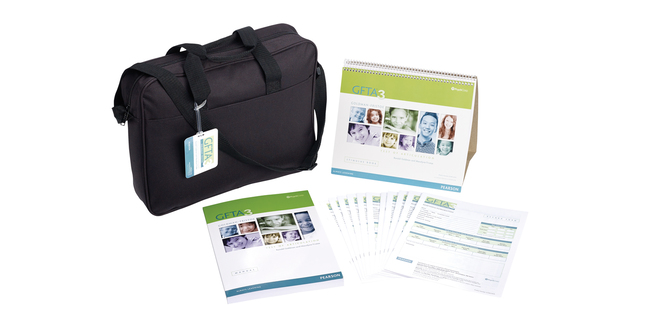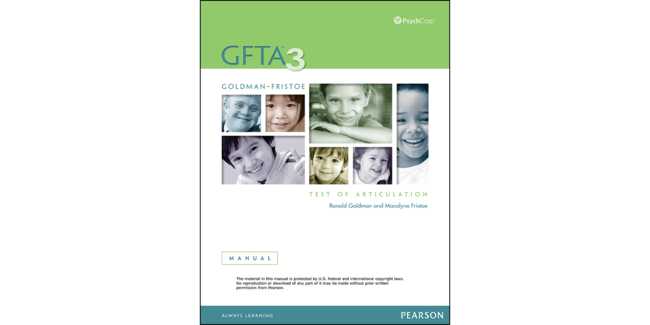The Goldman-Fristoe Test of Articulation™ 3 (GFTA™-3) provides accurate scores for making diagnostic and placement decisions. Guidance on using this test in your telepractice.

Goldman-Fristoe Test of Articulation | Third Edition
GFTA-3
The Goldman-Fristoe Test of Articulation™ 3 (GFTA™-3) provides accurate scores for making diagnostic and placement decisions. Guidance on using this test in your telepractice.Choose from our formats
Trousses
Trousses de démarrage et trousses complètes, imprimées et numériques
4 options
Formulaires & rapports d'essai
Livrets, formulaires d'enregistrement, livrets de réponse, rapports d'utilisation et abonnements
5 options
Matériels de soutien
Manuels, livres de stimulation, articles de remplacement et autres matériaux
4 options
Tous les produits
Tous les tests et matériaux proposés pour GFTA-3
13 options

